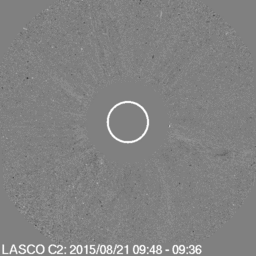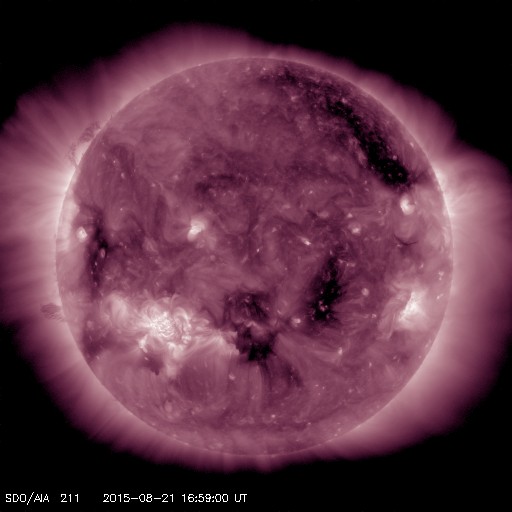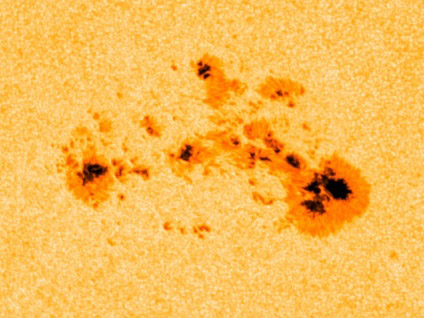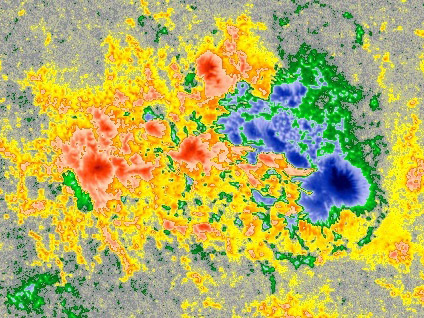Sunspot region 2403, M-class solar flares
Friday, 21 August 2015 17:32 UTC
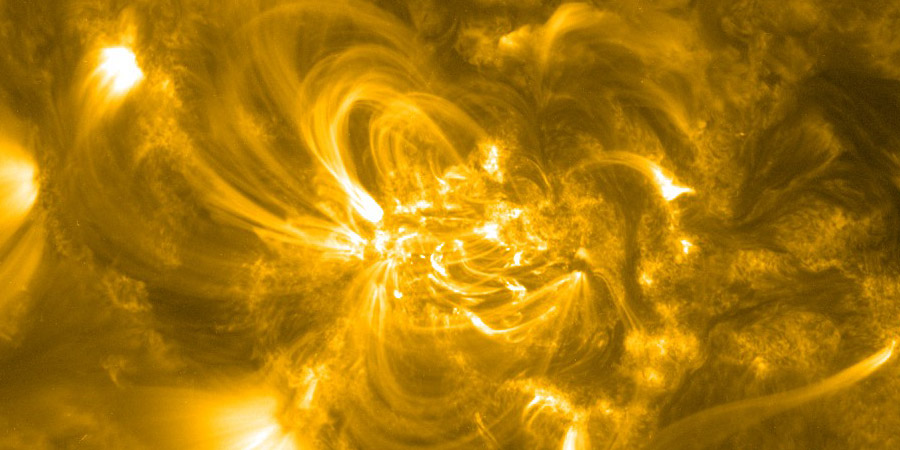
Solar activity is at moderate levels for the first time since 2015/07/06. Sunspot region 2403 erupted with an M1.2 solar flare today that peaked at 02:18 UTC. Another M-class solar flare took place at 09:48 UTC and again came from sunspot region 2403. This second M-class solar flare peaked at the M1.4 class.
Moderately strong M1.23 solar #flare from #sunspot region 12403 - Follow live on http://t.co/XHATH0OOfT pic.twitter.com/2NetxQ7vz1
— SpaceWeatherLive (@_SpaceWeather_) 21 augustus 2015
Moderately strong M1.43 solar #flare from #sunspot region 12403 - Follow live on http://t.co/XHATH0OOfT pic.twitter.com/QYTWpVwkAe
— SpaceWeatherLive (@_SpaceWeather_) 21 augustus 2015
The first of these M-class events (M1.2) did not launch a coronal mass ejection. The second M-class solar flare was associated with both Type II and Type IV radio sweeps and peaked at the M1.4 class. This event did launch a coronal mass ejection which we can classify as a partial halo coronal mass ejection that extends more than 180 degrees around the C2 coronagraph. The bulk of this coronal mass ejection is heading southward but a very faint northward extension can be seen if you look very closely meaning that a small part of this plasma cloud could very well be directed towards our planet. There is however also some bad news: we have to conclude that this coronal mass ejection is rather weak (faint halo) and very slow meaning we do not think it wil leave a notable trace in the solar wind here at Earth. A significant geomagnetic distrubance from this plasma cloud is unlikely.
Image: SOHO/LASCO C2 animation showing the coronal mass ejection launched by the M1.4 solar flare.
ALERT: Type II Radio Emission Begin Time: 2015 Aug 21 0959 UTC Estimated Velocity: 490 km/s
ALERT: Type IV Radio Emission Begin Time: 2015 Aug 21 0942 UTC
It is not just bad news as high latitude sky watchers will have a chance to catch aurora this weekend: we did had a coronal hole facing Earth the past few days and expect a solar wind stream from this coronal hole to cause enhanced geomagnetic conditions in the coming days.
Image: The Sun right now in the 211 Angstrom wavelength as seen by SDO. Coronal holes show up as black areas on this image.
Sunspot region 2403
The source of today's action is sunspot region 2403 which has been growing steadily the past few days and now has a Beta-Gamma-Delta magnetic layout. There is a good deal of magnetic mixing in this sunspot region and one small delta spot which is nicely squashed between spots of opposite polarity. If this sunspot region continues to grow the way it does we have to conclude that more M-class solar flares (R1-R2) are possible.
M-class flare probability for the coming 24 hours: 55% chance
X-class flare probability for the coming 24 hours: 5% chance
Images: Sunspot region 2403 as seen by SDO's HMI instrument.
Thank you for reading this article! Did you have any trouble with the technical terms used in this article? Our help section is the place to be where you can find in-depth articles, a FAQ and a list with common abbreviations. Still puzzled? Just post on our forum where we will help you the best we can!
Latest news
Latest forum messages
Support SpaceWeatherLive.com!
A lot of people come to SpaceWeatherLive to follow the Sun's activity or if there is aurora to be seen, but with more traffic comes higher server costs. Consider a donation if you enjoy SpaceWeatherLive so we can keep the website online!

Space weather facts
| Last X-flare | 2025/03/28 | X1.1 |
| Last M-flare | 2025/04/22 | M1.3 |
| Last geomagnetic storm | 2025/04/21 | Kp5+ (G1) |
| Spotless days | |
|---|---|
| Last spotless day | 2022/06/08 |
| Monthly mean Sunspot Number | |
|---|---|
| March 2025 | 134.2 -20.4 |
| April 2025 | 124.6 -9.6 |
| Last 30 days | 122.9 -6.2 |
